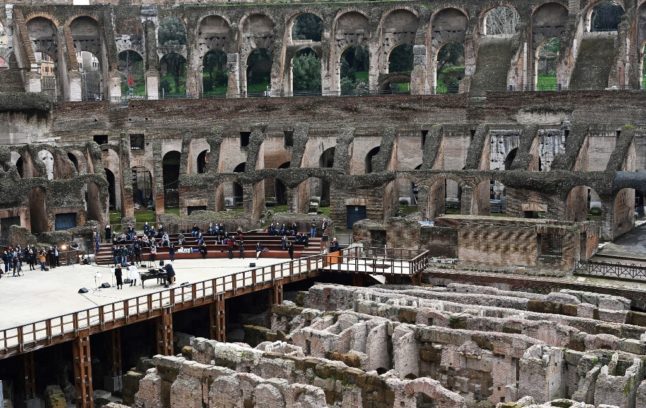Jonathan Scholes, 29, is being prosecuted in Rome for performing “obscene acts in a public place”, according to the Italian daily La Repubblica.
He reportedly set up a camera himself and did the handstand outside the Colosseum in April 2013 . He is now facing charges and is expected to be sentenced by a Rome judge before the end of the year, the Italian daily said.
The red-haired acrobat who calls himself the 'Naked Handstander' has built his controversial reputation by doing handstands in front of diverse locations, from Uluru in central Australia to the Great Wall of China.
He loves to post photos on his blog of himself doing handstands in remote landscapes as well as some of the world’s biggest cities. He says his first naked handstand was in Vik in Iceland in 2009.
The Local was unable to reach him for comment and his website says he is in an “undisclosed” location.
But his philosophy is simple. On his blog, he writes that he wants to “explore the world in all its glory and wonder in the raw” while raising awareness about the environment and consumer waste.
The handstander says he wants “to make people laugh, cry and smile .. and most importantly make people think about the glorious place we live in and what we do to it.”
His blog contains photos of his handstand stunts from around the world, although the one outside the Colosseum is missing.
Italy’s most popular tourist attraction seems to hold a particular appeal for many tourists who want to leave their mark on the ancient ruins, drawing the ire of Italian authorities.
Last year, a 25-year-old man and 26-year-old German woman were caught by security guards carving their whole names into the Colosseum with a coin.
In March last year, a 15-year-old Canadian school girl removed a brick from the Flavian Amphitheater and tried to make off with it in her rucksack as a souvenir.
The penalties for damaging the ancient monument, which is a national symbol of Italy, can be very heavy indeed.
Akaev Kazbek, a 42-year-old Russian tourist was sentenced to four months in jail and fined €20,000 after carving a large letter 'K' into one of the walls of the 2000-year-old amphitheatre.




 Please whitelist us to continue reading.
Please whitelist us to continue reading.
Member comments